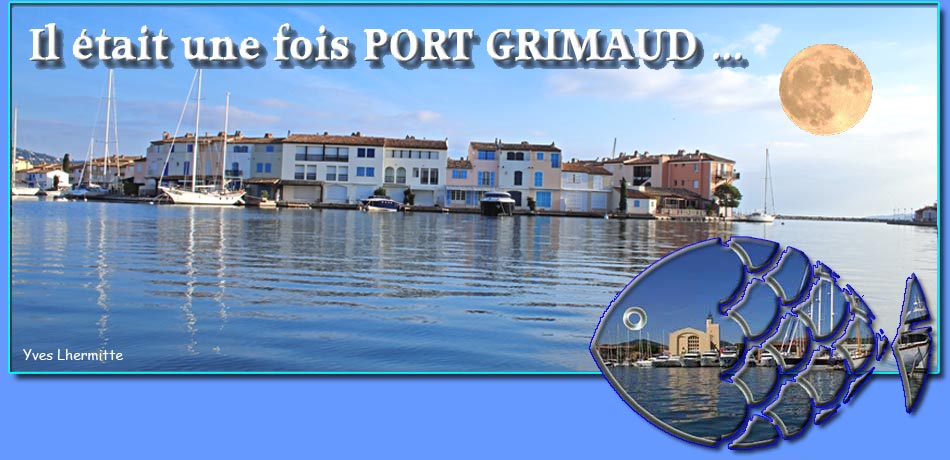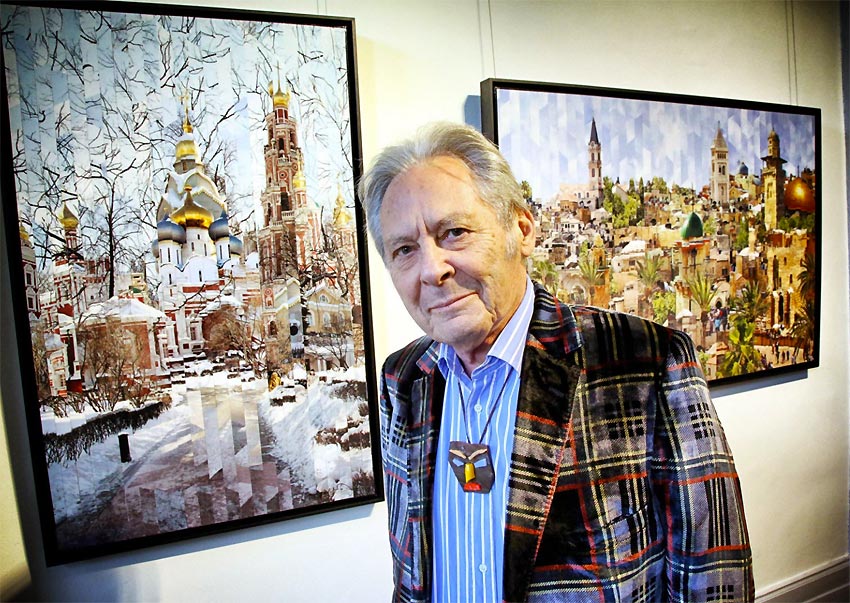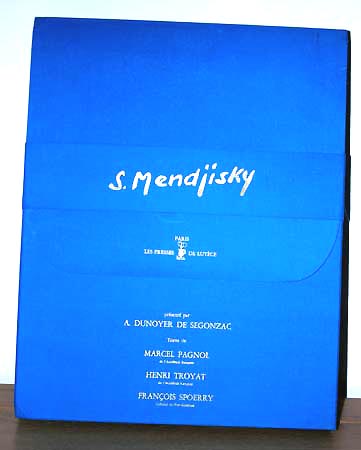
Serge MENDJISKY and PORT GRIMAUD :
It was in 1969 that the artist Serge MENDJISKY, a friend of François Spoerry, discovered Port Grimaud. The enchanting setting of the lakeside town gave him inspiration and he drew many paintings... 

For a long time a follower of divisionism, Serge Mendjisky turned to another mode of expression about ten years ago: he cuts out and then pastes hundreds of photographs, reconstructing the cities as he pleases. 
His life :He learns the technique of cartooning from Paul Grimaud and participates in the production of "La Bergère et le Ramoneur" by Grimaud and Prévert. In 1949 he moved to Nice and painted, encouraged by Picasso, Jacques Villon and Dunoyer de Segonzac. To earn his living, he works in a photoengraving workshop. From 1959 onwards, he exhibited his work in Paris, New York, Tuxon, Miami, Tokyo, Caracas, Washington, Melbourne, Philadelphia, Sydney and Tel Aviv. Influenced by Van Gogh, then by Cézanne, he discovered Divisionism in 1964 which allowed him to express himself fully. In 1964, he illustrated "Jean de Florette" by Marcel Pagnol. Serge Mendjisky's works can be found in about 25 international museums.

The 'blue' box :
Slide show of the 36 gouaches :
Marcel PAGNOL's text :"Serge's painting does not pose any problem, nor does it propose any message, neither philosophical, nor political, nor mystical, nor prophetic. He puts colours on a canvas, in a frame: that is to say that he pursues the same goals as Van Gogh, Cézanne, or Manet, and that he tries to show us the world not as he "thinks" it, but as he sees it, through his own sensibility, and to make us share his pleasure, and his emotion. The Provence he presents to us is that of Saint-Paul-de-Vence, that of Les Collettes where he spent his entire childhood, next to the illustrious forest house where the great Renoir painted so many masterpieces. But he did not imitate the Master. As the son of a Slavic father - who was himself a first-rate painter and Picasso's companion - and born of a Provençal mother, his paintings are full of his own personality. the Greco-Latin grace and measure, enriched and as if illuminated by the sumptuous colours of the East. At a time when the twilight of abstract art is approaching, it is a pleasure to salute the ancient and yet new talent of a true painter." The text by A. DUNOYER DE SEGONZAC :"I met Paul Signac in 1968 in Saint-Tropez where I was able to admire in his studio his paintings executed in pure colours, divided into small touches separated by the white of the canvas. This was the Divisionist School foreseen by Pissaro but of which Seurat and Signac were the true creators. This beautiful and luminous school flourished in the first third of the twentieth century, but the generation that followed Signac and Cross did not heed their teaching. I had the happy surprise of seeing the works of a very young artist: Serge Mendjisky, to see the rebirth of the Neo-Impressionist School with a very gifted young painter whose personal talent recovers the Art of Divisionism and revives its tradition. the Neo-Impressionist School with a very gifted young painter whose personal talent recovers the Art of Divisionism and revives its tradition." The text by François SPOERRY :"Lorsque When I am asked why I built Port-Grimaud, I am always surprised, as this creation seems so obvious to me today. For me, Provence is a lifelong friend. As far back as I can remember, I recall the landscapes of the Gulf of Saint-Tropez, where my first marine "exploits" took place... The many visits I made as a teenager to the Zurich History Museum, and in particular the fond memory I have of the models of the lakeside villages that once lined the Swiss lakes, are no doubt not unrelated to the decision I was to make later on. I wanted to be a naval officer, but a few years later I found myself an architect. That was the way fate decided! It seemed logical then that my sailing background and my architectural knowledge should lead me to seek the fulfilment of my childhood dream: life on the water in this sunny country. As luck would have it, I was offered a plot of land at the end of the gulf facing the sea, which would be suitable for a large-scale operation. And there, in front of these marshy expanses, I suddenly had a precise vision of what Port-Grimaud would be, this hand sinking into the sea, this newfound union of stone and water, of house and boat... And it is quite naturally that I oriented myself, in the design of this city, towards an architecture that integrates intimately with this wonderful landscape. To conceive a city of 10,000 inhabitants, a harbour of 1500 boats, where only reeds grew, is an undertaking as beautiful as it is risky. Luck and many years of effort have crowned with success a project that many people initially thought would fail. I wanted to give the people of Port-Grimaud the possibility of a change of scenery in a new setting, almost out of time, facing the sea: a possible opening to all kinds of escapism. For this change of scenery to be as complete as possible, it was necessary to combine the most artisanal processes, and the materials used had to take into account both the technical implications and the desire I had to design a Mediterranean town. The millions of old tiles that cover the roofs of Port-Grimaud, the old beams that support the loggias, and the "fin de siècle" gas spouts are all examples. In order to fuel the dream, diversity is necessary and can be seen in the volumes as well as in the changes of rhythm brought to the implantation of the perrons, the arcades, the windows and the balconies with their infinitely varied ironwork. I wanted this diversity, this refusal of monotony, to be the affirmation of a creative joy. A parallel is often drawn with Venice when talking about Port-Grimaud, the comparison is flattering, but in fact does not correspond well enough to reality in certain aspects: the canals that irrigate Port-Grimaud, the ochre, pink and sandy colours, dear to the Venetian houses, the small silent electric boats, and even the water coach called "Bucentaure", named after the ship used by the Doge during "Lo sposalizio del mare", a day commemorating a great Venetian victory, and which, although it has neither the majesty nor the extreme refinement, nonetheless ensures the transport of the city's inhabitants in an unusual way. Nevertheless, I wanted this town with its prestigious past, since it is said that Athenopolis made Hellenic trade flourish here, to be a town adapted to the rhythm of modern life. With this in mind, Port-Grimaud has been equipped with all the services necessary for the proper functioning of a community of this importance: shops and craft shops spread throughout the various districts of the town and around the Market Square, hotels and restaurants and even an ecumenical church, the meeting point of a true community. Port-Grimaud has been able to make the link between the past and the present, it has found both a style of its own and the singer it was missing. Indeed, no one other than Serge Mendjisky, the new "fauve" of modern painting, a prodigious alchemist of colour, could make Port-Grimaud blaze for the joy of us all.." 
|
© Yves Lhermitte 2023 Reproduction prohibited without permission...




































